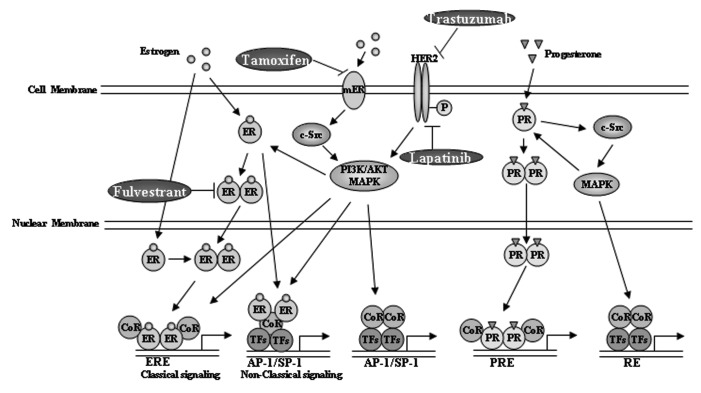Figure 1.
The estrogen receptor (ER) pathway includes the canonical and the non-canonical ER pathways. In the canonical pathway, the cytoplasmic estrogens bind directly to the nuclear membrane estrogen receptor and activate signaling. In the non-canonical pathway, the extracellular estrogens bind to the plasma membrane receptors and activate the phosphatidylinositol-3-kinase (PI3K) or Ras signaling pathway. Alternatively, the estrogens first penetrate through the cell membrane and then bind to the estrogen receptor monomer, which is then dimerized and transported into the nucleus to activate signaling. Treatment with tamoxifen blocks the binding of estrogen and, thus, inhibits the estrogen-activated signaling. Treatment with fulvestrant inhibits the cytoplasmic dimerization of estrogen. Treatment with aromatase inhibitors, such as letrozole, anastrozole and exemestane blocks estrogen production. Another characteristic correlated to the ER pathway is the progesterone receptor (PR) signaling, which is also involved in the regulation of luminal type breast cancer development. CoR, coregulators; RE, response element; TFs, transcription factors; mER, membrane ER; HER, human epidermal growth factor receptor; MAPK, mitogen-activated protein kinase; ERE, estrogen response element; PRE, progesterone response element.

